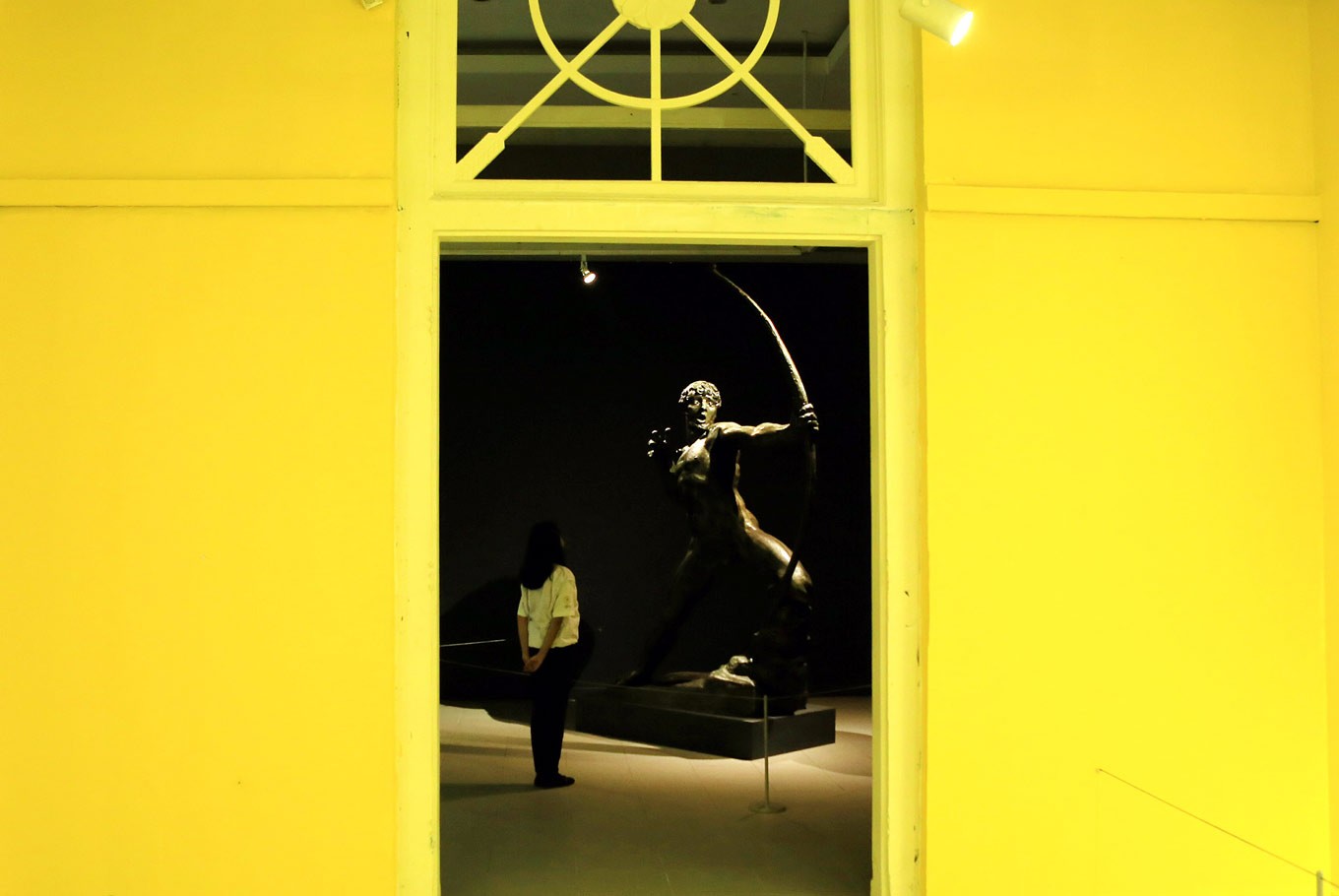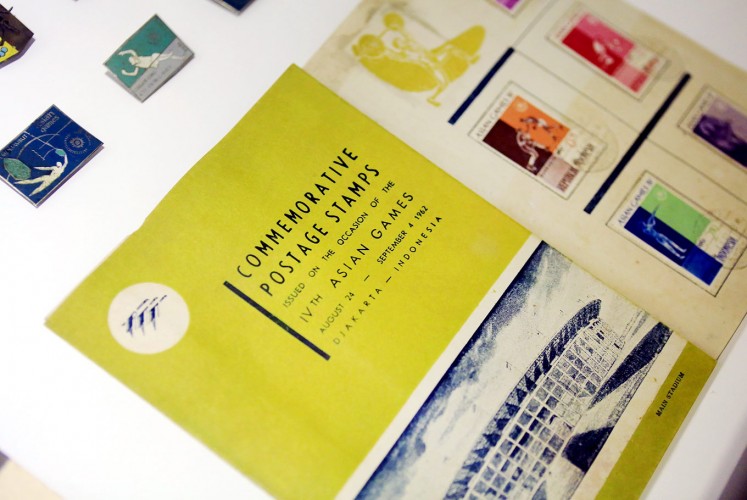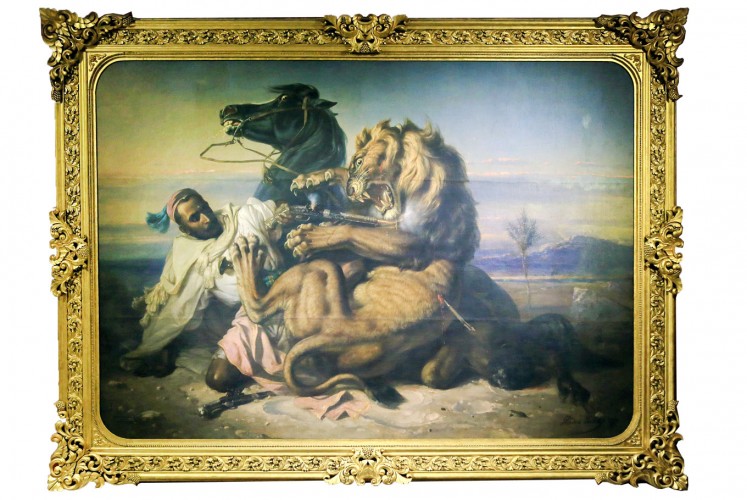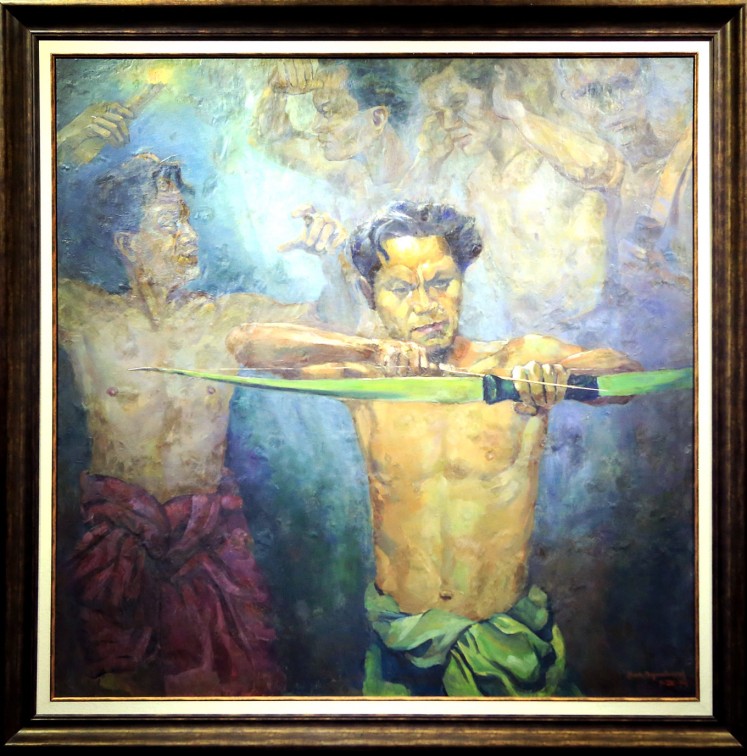Popular Reads
Top Results
Can't find what you're looking for?
View all search resultsPopular Reads
Top Results
Can't find what you're looking for?
View all search resultsPresidential art collection: Fame and intrigue
There is no room for abstraction.
Change text size
Gift Premium Articles
to Anyone
S
elected works of art from the collection of Indonesia’s four presidential palaces are currently on display at the National Gallery of Indonesia in Jakarta to emphasize the nation’s spirit at the time of the Asian Games.
Some of the works of art shown at an exhibition curated from Indonesia’s four presidential palaces — which stand in Jakarta, Bogor, Cipanas and Yogyakarta — have attracted fame and an element of intrigue throughout the years because of their relative seclusion from the public.
Since the displayed pieces come from the presidential collection, there is an abundance of nationalistic themes, tributes to heroes and celebration of the “old fashioned way” of doing things. There is no room for abstraction.
Some of the paintings’ subjects have been topics of intrigue and mystery as to why or who these people are and why they were curated by the state as part of the art collection.
Running until Aug. 31 to cover most of the time of the Asian Games, sports related artifacts reflecting the country’s pride in its ability to host the Games for the second time since 1962 are in full display.
Curator Amir Sidharta said the spirit of the exhibition was the old-fashioned Indonesian mentality of gotong royong (working together) in addition to the nation’s vital spirit when it came to achieving glory.
“Both sport and art are made up of journeys that are rife with creativity, diversity and the vitality of spirit. This exhibition, held alongside the Asian Games, is a celebration of both mediums,” he said.
“The point of this exhibition, I can say, is to showcase Indonesia’s cultural strength in Asia as well as to encourage creators and the youth to not stop creating for the nation’s sake,” State Secretary Pratikno said in a statement regarding the government’s decision to showcase the works of art publicly.
Affinity for the past: Since the exhibition runs in tandem with the Asian Games, several pieces of memorabilia from the 1962 Asian Games in Jakarta are displayed. (JP/Seto Wardhana)Several documents acquired from the National Archives depict news reports from 1962, depicting athletes, politicians and delegates from participating Asian nations in Jakarta, as well as old brochures, tickets, flyers and informational material of that year’s games.
As this is an exhibition to present Indonesia’s glorious history to the world, several archives related to the arts were also on display, such as old documents relating to and showing legendary artist Affandi’s exhibition in London in 1952.
In reference to former president Sukarno’s fascination with archery, two archery-themed sculptures serve as the centerpieces of the exhibition, with the one most notable being the Archer sculpture made by Hungarian sculptor Zsigmond Kisfalufi Strobl in 1919.
The story behind the sculpture goes that Sukarno saw Strobl’s works during a state visit to Hungary in 1960 and was enamored by the sculpture’s valiant archer’s pose and gallant bow that he wanted to bring that sculpture back to Indonesia, as to him it symbolized the proud Indonesian spirit.
The giant sculpture has called the front lawn of Bogor Palace its home ever since.
Elsewhere, works from classic realist painters like Raden Saleh, Basoeki Abdullah, Trubus Soedarsono and Sekar Gunung adorn the walls with the Indonesian spirit and familiar historic faces.
Raden Saleh’s 1870 painting A Fight with the Lion is positioned prominently in the exhibition hall as an ode to life and death.
The devil is in the detail: A painting by legendary Indonesian painter Raden Saleh contains an underlying message about Dutch colonialism. (JP/Seto Wardhana)The painting itself is grand, evoking the kind of intensity seen in paintings that depict David’s fight against the giant Goliath. In it, a tiger mauls a riding horse as its owner falls and witnesses the attack.
The story goes that Raden Saleh initially wished to depict humans hunting animals but switched his focus to depict the natural instinct of animals hunting other animals, of which humans are also one.
Elsewhere, local folklore epics, such as Rama and Shinta, are depicted by artists such as Sekar Gunung in its vital spirit, with a 1961 work titled The Rescue of Shinta.
Painted in a glorious, mystical fashion, it is supposed to be a critique of the illegal usurping of power, as depicted by the story’s character Rahwana taking Shinta away to evoke the anger of her lover, Rama.
Vital spirit: Archery is a central theme in many of the artworks in the presidential collection as former president Sukarno found the archer’s spirit to fit with the Indonesian spirit. (JP/Seto Wardhana)
The exhibition of a painting criticizing illegal power grabs in the presidential collection is rather ironic, considering the fact that Indonesian leaders are not free from that sin. For one, many today agree that former president Soeharto, who ruled for 32 years, obtained his position illegitimately.
But the exhibition is not all about metaphors to spirit. Portraits of Indonesian historical figures like composer Wage Rudolf Supratman also grace the hall with their eternal gazes, as well as paintings that depict the beauty and reality of everyday Indonesian life.
One particular painting that brings the visitor down to earth is Trubus Soedarsono’s Woman by the Window, in which the artist painted his wife in a calm setting and mood.
The presidential collection also holds some works from international artists, which were showcased as well, including pieces from Japan’s Shinsui Ito, China’s Lee Man Fong, Mexico’s Gustavo Montoya, the Philippines’ Fernando Amorsolo, Ukraine’s Yevgeny Viktorovich Vuchetich, Argentina’s Roberto Juan Capurro and Cambodia’s Nek Dim, to name a few.














